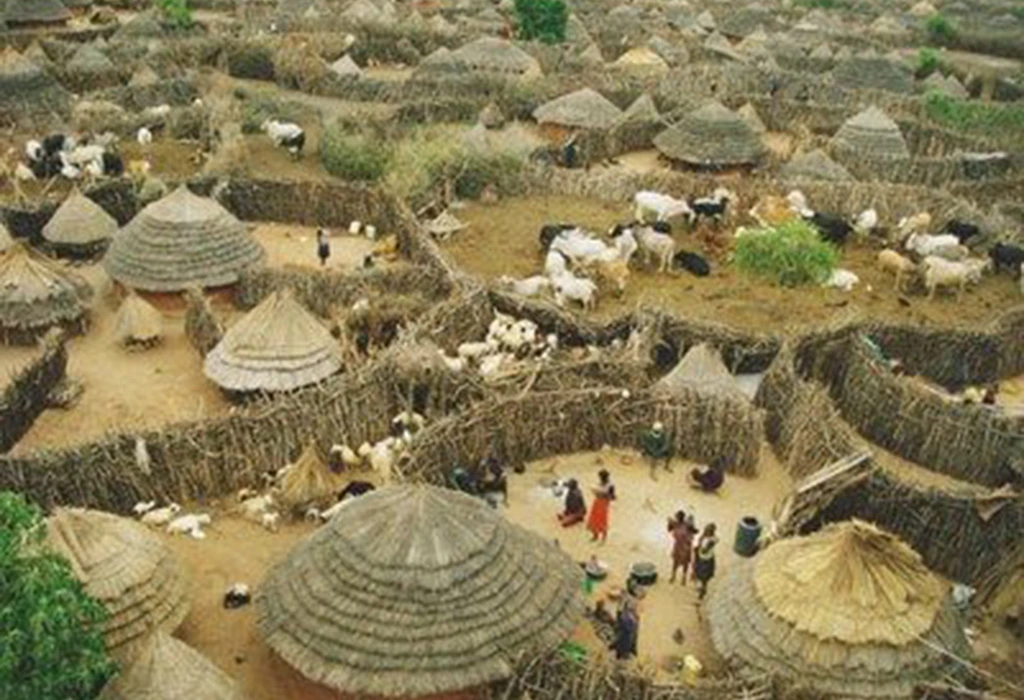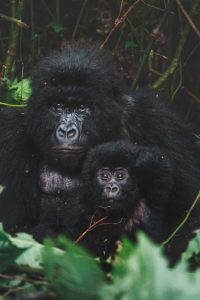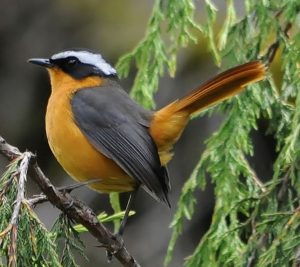Uganda, often referred to as the “Pearl of Africa,” is known for its incredible wildlife, lush landscapes, and, more recently, its diverse cultural heritage. With over 50 indigenous tribes, Uganda is a treasure trove of culture, each group with its own unique traditions, languages, dances, rituals, and history. As cultural tourism continues to grow in popularity, many travelers are increasingly searching online for answers to questions like “What are the most popular cultural experiences in Uganda?” or “How can I combine cultural tours with wildlife safaris in Uganda?” If you’re planning a Uganda cultural tour or simply curious about authentic African traditions, this guide is for you.

What Are the Most Popular Cultural Experiences in Uganda?
Uganda offers a rich tapestry of cultural experiences that are immersive and enlightening. Below are some of the most popular cultural attractions and activities travelers seek out:
1. The Buganda Kingdom – Heart of Central Uganda
As the largest and most influential kingdom in Uganda, Buganda offers a deep dive into the cultural heritage of the Baganda people. Key attractions include:
- Kasubi Tombs – A UNESCO World Heritage Site where four former kings (Kabakas) of Buganda are buried.
- Kabaka’s Palace (Lubiri) – A historic royal palace in Mengo, near Kampala.
- Bulange Parliament – Home to the Lukiiko (traditional parliament) of Buganda.
- Traditional Dance Performances – Bakisimba, Nankasa, and Muwogola dances are performed at cultural centers like the Ndere Centre.
2. The Batwa Trail – Indigenous Forest Dwellers
Located near Bwindi Impenetrable and Mgahinga Gorilla National Parks, the Batwa Trail introduces visitors to the ancient lifestyle of the Batwa pygmies:
- Learn about traditional hunting and gathering.
- Participate in fire-making and medicinal plant identification.
- Experience their music, dance, and storytelling.
3. Karamojong Cultural Encounters – The Warrior Nomads
In the remote northeast, the Karamojong people maintain a traditional semi-nomadic lifestyle:
- Visit manyattas (homesteads) to learn about daily life and customs.
- Participate in cattle herding and observe warrior dances.
- Explore the Karamoja Cultural Museum and crafts markets.
4. Tooro Kingdom and the Empaako Naming Ceremony
Situated in Fort Portal, the Tooro Kingdom offers:
- A visit to the Tooro Royal Palace and Museum.
- Participation in the Empaako naming ceremony, a UNESCO-recognized tradition.
- Hikes to cultural sites like Amabere g’ Nnyinamwiru caves.
5. Busoga Kingdom and the Source of the Nile
Explore the eastern kingdom of Busoga:
- Visit the Kyabazinga’s Palace and cultural museums.
- Discover the cultural significance of the River Nile.
- Enjoy traditional Basoga dances and folklore.
How Can I Combine Cultural Tours with Wildlife Safaris in Uganda?
This is one of the most common searches from travelers planning an African tour. Uganda is unique in that it allows for a seamless blend of cultural immersion and wildlife adventure. Sample itineraries often combine:
- Kampala city tours with visits to Uganda Museum and cultural sites.
- Batwa cultural trails followed by gorilla trekking in Bwindi.
- Karamojong community visits before heading to Kidepo Valley National Park.
- Cultural sites in Fort Portal paired with chimpanzee tracking in Kibale Forest.
- Igongo Cultural Centre visits before game drives in Lake Mburo National Park.
Tour operators in Uganda have designed integrated packages to offer travelers a full-circle experience – meeting local people, learning ancient customs, and seeing wildlife in its natural habitat.
What Traditional Dances and Music Can I Experience in Uganda?
Dance and music are integral to Uganda’s cultural expression. Each ethnic group in Uganda has its own distinct musical instruments, rhythms, and dance styles:
- Bakisimba Dance (Buganda): A royal dance performed during celebrations, using drums and body movement to express joy.
- Runyege-Ntogoro Dance (Bunyoro/Tooro): A courtship dance performed by youth.
- Adungu Music (Acholi/Alur): String instruments producing melodic tunes.
- Larakaraka Dance (Acholi): A traditional dance associated with weddings and social events.
- Amaggunju Dance (Buganda): Symbolic dance for royal ceremonies.
You can watch and even learn some of these dances at the Ndere Cultural Centre in Kampala or during community visits across Uganda.
Are There Any UNESCO World Heritage Sites in Uganda Related to Culture?
Yes, Uganda is home to notable UNESCO cultural heritage sites:
- Kasubi Tombs: These tombs in Kampala serve as the royal burial grounds for Buganda kings. Built entirely from organic materials, they showcase traditional Ganda architecture and sacred rituals.
- Empaako Naming Tradition: While not a physical site, this intangible heritage of the Batooro, Banyoro, Batuku, and Banyabindi people involves giving a second name from a set of 12 shared by the community. It’s a gesture of love, respect, and social cohesion.
What Cultural Festivals or Events Can I Attend in Uganda?
Travelers often search for “cultural festivals in Uganda” or “when to visit Uganda for cultural events.” While Uganda doesn’t have a fixed calendar of large-scale cultural festivals, there are regular community-based events and performances:
- Ndere Cultural Evenings – Weekly dance and music showcases from across Uganda.
- Bayimba International Festival – Celebrates music, dance, theatre, film, and visual arts.
- Royal coronation anniversaries – Public celebrations held in kingdoms like Buganda and Tooro.
- Community-run cultural days – Local cultural events in villages and schools.
Ask your tour operator in advance if your trip coincides with a cultural festival for a richer experience.
How Can I Support Local Communities During My Cultural Tour?
Ethical travel is now a major focus for conscious travelers. People often search for “community-based tourism in Uganda” or “how to travel sustainably in Uganda.” Here’s how you can help:
- Choose community-based tour operators: Look for operators who involve local guides, pay fair wages, and reinvest in local development.
- Buy local crafts: Support women’s groups and youth cooperatives by purchasing handwoven baskets, beadwork, and batik fabrics.
- Homestays: Opt for community-run accommodations to experience everyday life and contribute directly to household incomes.
- Leave no trace: Respect sacred sites, ask before taking photographs, and minimize waste.
What Are Some Recommended Cultural Tour Itineraries in Uganda?
To help with planning, here are examples of popular Uganda cultural tour itineraries:
1-Day Kampala Cultural Tour
- Visit Uganda Museum, Kasubi Tombs, Namugongo Martyrs Shrine
- Walk through the Nakasero Market
- Cultural dance evening at Ndere Centre
7-Day Central and Western Uganda Cultural Safari
- Day 1-2: Kampala, Buganda sites
- Day 3-4: Fort Portal, Empaako ceremony, Amabere caves
- Day 5: Queen Elizabeth National Park game drive
- Day 6: Visit Igongo Cultural Centre in Mbarara
- Day 7: Return to Kampala
10-Day Cultural and Wildlife Combo
- Central, western, and northern Uganda
- Includes Buganda, Tooro, and Karamojong experiences
- Safari in Murchison Falls and Kidepo Valley
These tours can be customized to fit your interests, from deeper cultural engagement to mixing in wildlife or adventure activities.
What Unique Cultural Sites Should I Not Miss in Uganda?
If you’re searching for “hidden cultural gems in Uganda,” consider these sites:
- Nyero Rock Paintings (Kumi District) – Ancient geometric rock art dating back to 1250 AD.
- Sezibwa Falls – A spiritual site of the Baganda, often visited for blessings.
- Amabere g’ Nnyinamwiru Caves – Mythological caves with stalactites said to represent breasts.
- Igongo Cultural Centre (Mbarara) – Museum, restaurant, and craft shop celebrating Ankole heritage.
- Kabaka’s Lake – A man-made lake in Kampala built under the orders of Kabaka Mwanga.
Are There Culinary Experiences Included in Uganda Cultural Tours?
Ugandan cuisine is as diverse as its culture. Culinary enthusiasts searching for “traditional Ugandan food experiences” will enjoy:
- Cooking classes in local homes or community centers.
- Learning to prepare dishes like matoke (steamed plantains), luwombo (stew in banana leaves), malewa (bamboo shoot delicacy from eastern Uganda).
- Visits to local markets to understand food sourcing and ingredients.
These food experiences not only fill your belly but also teach you about local agricultural practices, family traditions, and nutrition.
How Can I Ensure a Respectful and Immersive Cultural Experience?
To create a meaningful connection while maintaining respect for host communities:
- Do your research: Read about the region, customs, and local norms.
- Ask for permission: Especially before taking photos.
- Dress modestly: Especially when visiting rural areas or religious sites.
- Be open-minded and patient: Cultural experiences vary in pace and style; embrace the difference.
- Engage actively: Learn greetings in local languages, try the dances, ask questions.
Why Choose Uganda for a Cultural Tour?
If you’re asking, “Why should I choose Uganda for cultural tourism?” the answer lies in its diversity, authenticity, and warmth. Uganda offers one of the most authentic and untouched cultural experiences in East Africa. From royal palaces to forest dwellers, and from drumming circles to community meals, every encounter feels genuine and enriching.
As cultural tourism becomes an integral part of global travel, Uganda stands out as a destination where travelers can connect with tradition, learn through participation, and contribute to the preservation of heritage. Whether you’re a solo traveler, couple, or group, Uganda cultural tours promise an unforgettable journey into the soul of Africa.




